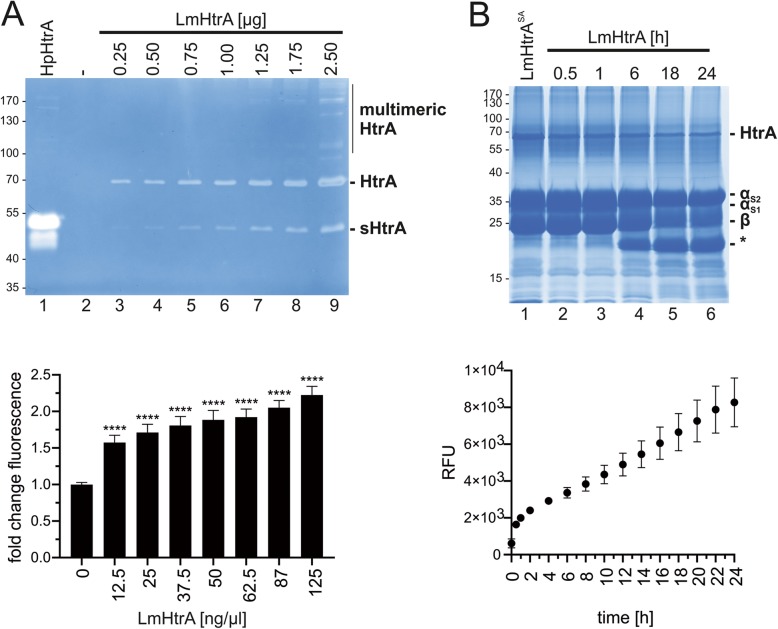Fig. 3.
L. monocytogenes HtrA is highly active. a Indicated protein amounts of LmHtrA in 20 μl HEPES were analyzed by casein zymography. 3 μg H. pylori HtrA (HpHtrA) was used as a positive control. A truncated version of HtrA (short HtrA, sHtrA) has been detected (upper panel). Quantification of LmHtrA activity was performed in a fluorometric assay using FITC-casein as a substrate (lower panel) and indicated concentrations of LmHtrA, which corresponds to the used amounts of LmHtrA in the zymogram. These results are presented as fold change in fluorescence with untreated FITC-casein set to 1. b 5 μg casein were incubated with 1 μg LmHtrA for the indicated periods of time. LmHtrASA was used as a negative control. Cleavage activity was detected by coomassie staining of proteins (upper panel). Quantification of LmHtrA activity was performed in a fluorometric assay using FITC-casein (lower panel) and indicated concentrations of LmHtrA, which corresponds to the used amounts of LmHtrA in the zymogram. The kinetics of LmHtrA-mediated FITC-casein cleavage was analyzed and presented as relative fluorescent units (RFU). All data were obtained from three independent experiments with at least three technical replicates

